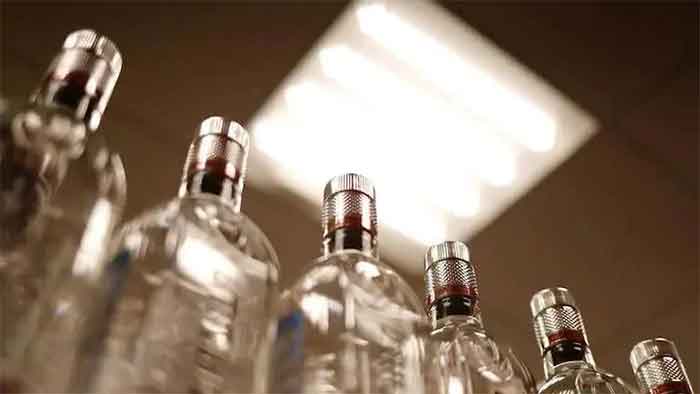
There have been several reports about the adverse impact of high levels of meat production and consumption on food production. For example it is well recognized that seven kgs. of grain, or more, is used to produce one kg. of beef in intensive systems and at the same massive amounts of water are used, and this has a very adverse impact on food security. But unfortunately similar very adverse impacts of increasing alcohol consumption on food security have not received the due attention.
As liquor consumption is increasing more and more fertile land is being used to grow the various raw materials for the liquor industry. Often various crops are grown in ways, for example in terms of selection of crop varieties, such that these can be supplied directly to the liquor industry. Hence a lot of fertile land is taken away from the production of food. In conditions where profit is the main factor, and liquor being a very high profit industry, it is hardly surprising that land is diverted to meet the needs of the liquor industry.
In recent years in countries like India and China where liquor consumption and production has increased in a big way there is a significant diversion of fertile land from producing food to producing ( raw material for ) liquor.
There has been an increasing trend of diverting highly nutritious fruits like apples and plums in some hill areas in particular from direct consumption to processing as liquor, as this brings higher profits. In some hill areas known for their high production of apples we see that children from poor households hardly eat apples but apples are increasingly used in making expensive wines.
In addition it has been seen that sometimes in government storages deterioration of quality of some grain or its rotting is conveniently allowed by some corrupt persons with a view to facilitating its sale at a very cheap price to the liquor industry. This denies availability of food to those who need this the most.
Another way in which food security is impacted is at the level of increasing consumption of liquor in several poor households. Much to the resentment and distress of women and children, in several poor households with difficulty in obtaining adequate food and nutrition, men insist on regular consumption of liquor. This may happen due to a complex factors but the net result is that the food and nutrition situation in several poor households is further affected adversely.
Another aspect is that a lot of water is diverted for making liquor in several areas , or for irrigating water-intensive crops meant for the liquor industry, even though there is increasing water shortage for drinking and for irrigating food crops. Such reports have even been received even from drought-affected and drought-prone areas.
A report in India Today by Kiran Tare on serious water scarcity in Marathwada region said, “Indiscriminate release of water for sugarcane cultivation and alcohol production has depleted the (water) reservoirs. There are some 200 distilleries in Aurangabad, which use enormous quantities of potable water.” This was reported at the time of a serious water scarcity in the area.
In other areas water situation in threatened by fast increase in wine production and the increase in grapes production to feed wine units with raw material. The prestigious Economist journal reported some time back that 960 litres of water are used for one litre of wine.
From Punjab as well as from other areas there are reports of very high pollution of rivers and water sources due to the effluents released by distilleries. Distilleries are known to be a very significant source of water pollution in several areas, apart from spreading foul smell and hence hindering farm work in nearby villages.
What is the total impact of these two aspects – diversion of huge quantities of potable water to distilleries (as well as for the availability of their raw material) and the pollution of various water sources by effluents released by distilleries. The continued impact of these should be assessed in well-planned water audits of increasing liquor production.
At present India leads the world in increase of liquor consumption in recent times.. Alcohol consumption more than doubled in India between 2005 and 2016. According to WHO projections for year 2025, the increase of liquor consumption from 2005 to 2025 will be between 3 to 4 times in India. The discussion so far has been on on the disastrous health and social impact of this increase. We also need to know the food and water impact.
Similarly there is a need to assess all aspects of the adverse impact of tobacco production and consumption on food security.
Bharat Dogra is a journalist who has been closely involved with several social movements.
GET COUNTERCURRENTS DAILY NEWSLETTER STRAIGHT TO YOUR INBOX











































